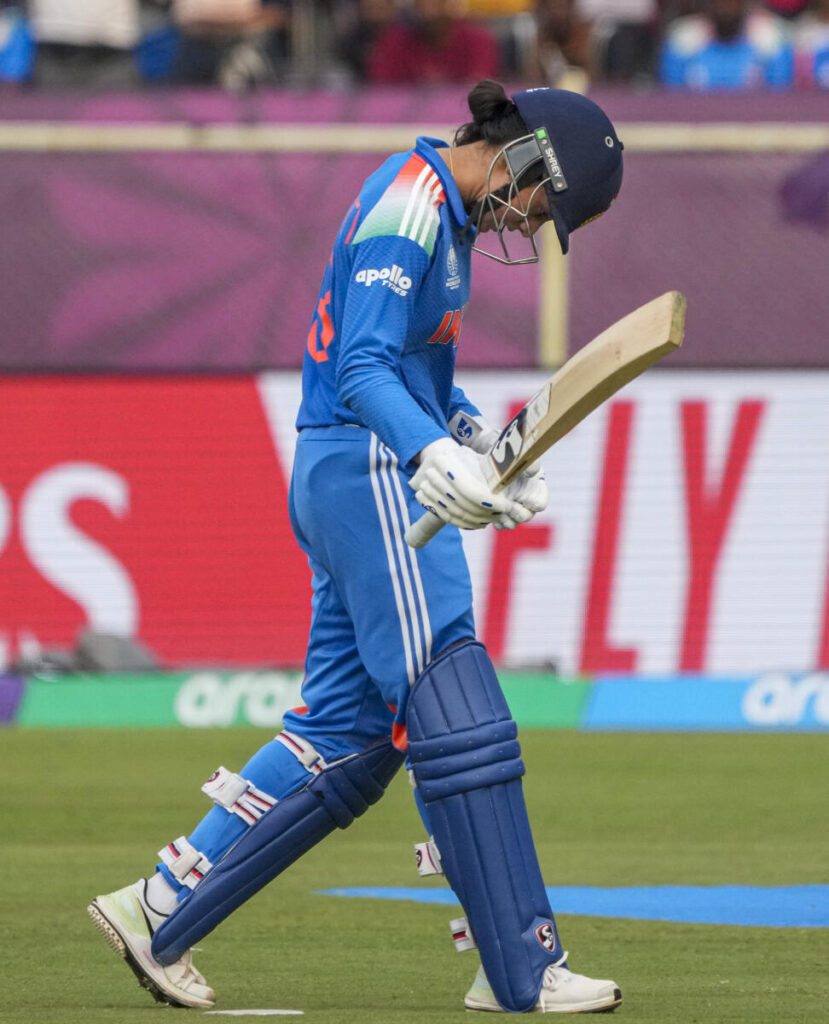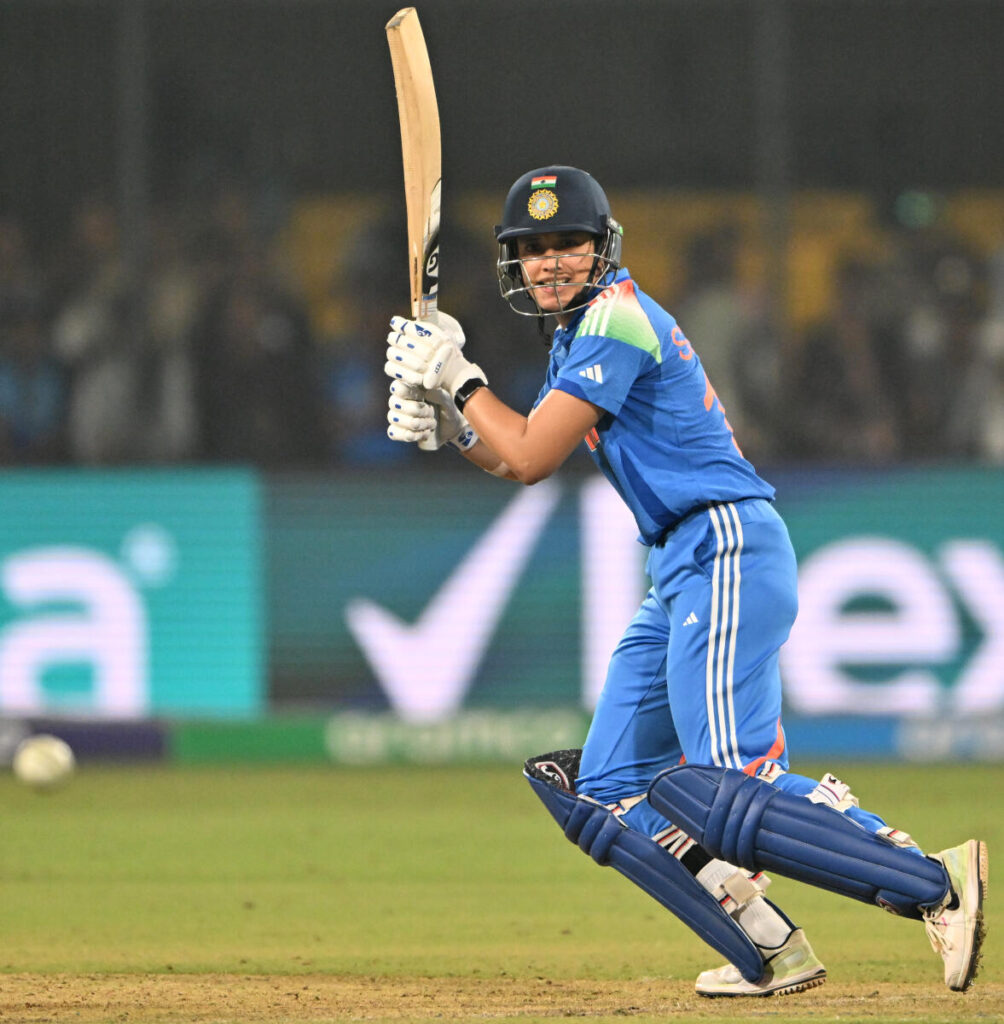
Thriller in Indore: England Survive India’s Late Surge to Clinch Four-Run Victory and Semi-Final Spot
In a match that will be etched in the annals of women’s cricket for its sheer drama and heartbreak, England Women eked out a pulsating four-run victory over hosts India Women in the 20th league fixture of the ICC Women’s World Cup 2025 at the Holkar Stadium in Indore on October 19. Chasing a daunting 289, India seemed poised for their highest successful ODI pursuit, only for nerves to fray in the closing stages, leaving them stranded at 284 for 6. England, led by stand-in skipper Nat Sciver-Brunt, thus remained unbeaten and sealed their semi-final berth alongside Australia and South Africa, while India now stare down a must-win clash against New Zealand to keep their title dreams alive.
The evening unfolded on the eve of Diwali, with fireworks expected from the bat rather than the sky. Over 25,000 fans packed the stands, their blue jerseys a sea of optimism after India’s recent stumbles against South Africa and Australia. Yet, it was England’s resilience—fueled by Heather Knight’s sublime century—that turned the tide. Knight’s 109 not only anchored England’s 288 for 8 but also marked her 300th international appearance, a milestone celebrated with a reverse sweep that epitomized her tactical brilliance. For India, the loss marked their third consecutive defeat, piling pressure on captain Harmanpreet Kaur and her squad in a tournament where every run feels like a lifeline.
Nat Sciver-Brunt’s decision to bat first after winning the toss—a call that raised eyebrows given the dew factor in Indore’s night fixture—proved prescient. England, missing regular captain Heather Knight from leadership duties due to her batting focus, fielded a balanced XI: Amy Jones (wk), Tammy Beaumont, Knight, Sciver-Brunt (c), Sophia Dunkley, Emma Lamb, Alice Capsey, Charlotte Dean, Sophie Ecclestone, Linsey Smith, and Lauren Bell. The inclusion of Lamb over the more aggressive Danni Wyatt signaled a conservative approach early on, prioritizing stability on a pitch offering turn.
India, meanwhile, opted for a surprise: dropping in-form batter Jemimah Rodrigues in favor of pacer Renuka Singh Thakur, bolstering their seam attack. Their lineup read: Pratika Rawal, Smriti Mandhana (vc), Harleen Deol, Harmanpreet Kaur (c), Deepti Sharma, Richa Ghosh (wk), Amanjot Kaur, Sneh Rana, Kranti Gaud, Shree Charani, and Renuka. Debutant Kranti Gaud, a left-arm seamer, added variety, while leg-spinner Shree Charani was tasked with containing the middle order. This move left India light on batting depth, a decision that haunted them later.

The pitch, under lights, looked a belter—true in pace with a hint of grip for spinners. Early cloud cover gave way to a balmy evening, perfect for strokeplay, but England’s openers approached it with caution, aware of India’s potent spin attack led by Deepti Sharma.
England’s innings kicked off tentatively, with openers Tammy Beaumont and Amy Jones navigating the new ball under overcast skies. Renuka Singh struck early drama, trapping Beaumont lbw in the first over only for it to be negated by a no-ball—Beaumont capitalizing with a free-hit four. The duo grafted through the powerplay, amassing 42 for no loss in 10 overs, but Jones’ watchful 56 off 68 balls set the tone. Her crisp drives through point off Renuka and Gaud provided momentum, including a flicked four that raced away.
The first breakthrough came at 73 for 1 in the 16th over, as Deepti Sharma, introduced early, castled Beaumont with a drifting full delivery for 22 off 43. Jones followed soon after, chipping a loopy full toss straight to Mandhana at short midwicket for 56—a soft dismissal that belied her solid knock. At 98 for 2 after 21 overs, England were teetering.
Enter Heather Knight, the fulcrum of England’s revival. In her 300th ODI, Knight arrived with poise, countering India’s spin web with a repertoire of sweeps—conventional, reverse, and paddle—that dismantled the bowlers. Partnering Nat Sciver-Brunt, she rebuilt through a sedate phase before exploding into a 113-run third-wicket stand off 102 balls. Knight’s fifty came off 52 deliveries, marked by a shovelled six off Kranti Gaud—the only maximum of the innings. Sciver-Brunt complemented with 38 off 49, her steady accumulation pushing the score to 211 for 3 by the 39th over.
The acceleration was Knight’s masterclass. She targeted Shree Charani ruthlessly, sweeping her for boundaries and lofting inside-out against Ecclestone’s left-arm darts. Reaching her century off 86 balls—her 13th in ODIs—with a flicked four off Sneh Rana, Knight exuded bottom-hand power honed from rigorous rehab after a prior Achilles injury. Her running between wickets was electric, converting singles into twos with sharp calls.
Yet, just as 320 loomed, Knight’s run-out at 249 for 4 in the 45th over— a direct hit from Amanjot Kaur off a misfield—triggered a collapse. Sophia Dunkley holed out to long-off off Charani for 15, Alice Capsey reverse-pulled feebly to cover off Deepti for 11, and Emma Lamb skied to long-on for 2. Sophie Ecclestone’s run-out at 280 for 8 left Charlotte Dean (19* off 13) and Linsey Smith (0*) to eke out eight more runs. England’s 288 for 8 felt under par, but Deepti’s 4 for 51—her 150th ODI wicket—included gems like Jones’ catch and Capsey’s cramp-inducing yorker, keeping India in the hunt.
Fall of wickets underscored the drama: steady till 211, then 39 runs for four in five overs. India’s spinners—Charani 2 for 68, Sneh 0 for 46—contained, but the seamers leaked 83 off 12 overs. Knight later reflected, “It was about adapting to the turn and using the sweep to disrupt their lengths. The lower order let us down, but 288 was defendable.”

Needing 289—their highest ODI chase—India’s reply began with promise laced with peril. Lauren Bell, swinging the new ball, induced Pratika Rawal’s edge to Jones for 6 in the third over, leaving Mandhana exposed. Harleen Deol joined, but her labored 24 off 31 balls—four boundaries but bogged down at 4 off 26—pushed the required rate above six. Charlie Dean’s indrifter trapped Deol lbw at 42 for 2 in the 10th over, a review wasted as ball-tracking confirmed three reds.
Mandhana, initially watchful (18 off 32 in the first 12 overs), found her rhythm post-drinks. Harmanpreet’s arrival ignited the chase. The captain, fresh off a lean patch, flicked Sciver-Brunt disdainfully for four and lofted Ecclestone over extra cover—a shot of pure class. Their 125-run third-wicket partnership off 131 balls resuscitated India, blending Mandhana’s silky drives with Harman’s aggression. Mandhana’s fifty arrived off 60 balls, her fifth against England, while Harman raced to 70 with ten fours, including a brace off Dean.
At 167 for 3 after 30 overs, needing 122 off 120, India were cruising. Harman’s glide to short third off Sciver-Brunt— a low catch by Lamb—broke the stand, but Deepti Sharma, hero with the ball, strode in confidently. Her measured 50 off 57 balls, alongside Mandhana, featured deft nudges and a pulled six off Dean. The duo rotated strike masterfully, taking the score to 234 for 4 in 41.2 overs—55 needed off 53, seven wickets intact. Mandhana’s 88, though short of her hundred, included eight fours, her post-match tears underscoring the agony: “We had it in our grasp; the pressure got to us.”
What followed was a collapse for the ages, evoking ghosts of the 2017 World Cup final where India faltered from 191 for 3 chasing 229. Needing boundaries, Richa Ghosh drilled Sciver-Brunt straight to Knight at cover for 8—a rash shot under mounting dots. At 256 for 5 after 46 overs, 33 off 24 seemed gettable, but Deepti’s slog-sweep off Ecclestone ballooned to Dunkley at deep midwicket for 50, her mirror of a 2017 miscue sealing 262 for 6.
Amanjot Kaur (18*) and Sneh Rana (10*) faced a barrage. Linsey Smith’s recall was genius: her 48th over yielded just four singles, the ball gripping like glue. Needing 23 off 12, Ecclestone’s 49th conceded seven— a wide, a leg-bye, and singles—leaving 14 off the last from Smith. The left-armer, unflappable, bowled four dots interspersed with singles, her final full-length delivery sliced for four falling short. India managed nine, the Holkar erupting in stunned silence.

Sciver-Brunt’s figures read 8-0-47-2 (Harman and Richa), but her captaincy shone. Ecclestone (1-58) and Smith (1-40, Mandhana) choked the death, conceding just 21 off the last six overs. Bell (1-52) and Dean (1-67) supported, their economy under pressure belying the target.
In the aftermath, Sciver-Brunt beamed: “So happy. We stayed calm; getting Mandhana was key. The spinners were gold.” Knight added, “Thrilling—India pushed us all the way, but our fight won it.” Mandhana, fighting tears, said, “Devastated. We choked when it mattered; need to reset for NZ.” Harmanpreet lamented the Rodrigues snub: “Batting depth hurt; we’ll review.”
England’s spinners bowled 30 overs for 156 runs and five wickets, their control pivotal. India’s seamers, led by Renuka (0-37), were tidy but lacked bite.
This win catapults England into the semis, their unbeaten run a testament to depth despite middle-order fragility. Australia and South Africa await; a final against the hosts remains a dream.
For India, heartbreak mounts. Third straight loss drops them to fourth, net run rate teetering. Beating New Zealand becomes non-negotiable—victory plus a Bangladesh win over Pakistan could suffice. Yet, the Indore implosion questions resolve under lights. As Diwali dawns, Kaur’s warriors must reignite their fire, or the Cup slips away at home.


